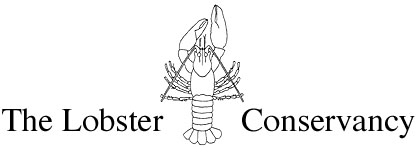 |
 |
| Unit/Task Title:Marine
Food Web (adapted from Sea Soup Teacher's Guide, pp 43-47) |
Grade Level:5-8 | Course(s):Science | Author:Linda Archambault |
| Content Area(s) addressed in this unit/task: Science and Technology |
Content Standards and Performance Indications. These standards refer to the Maine Learning Results: S+T: B4, B5 |
| Guiding Principles taught and assessed in this unit: |
Assessment criteria (how will you know when they know): Given a group of organisms from another ecosystem such as a forest or pond, students will draw a food web, making appropriate connections between the various organisms and correctly labeling producers, consumers and decomposers, herbivores and carnivores. |
Part 1. Hold a classroom discussion about food webs and energy flow. (see Sea Soup Teacherís Guide for discussion questions) Have each student pick a marine organism to research. The list could include: phytoplankton such as diatoms or dynoflagellates, zooplankton such as copepods or crab, fish and lobster larvae, filter-feeding fish (herring, basking shark), larger carnivorous fish (mackerel, bluefish, tuna), jellyfish, sea turtles, adult lobsters, humans, decomposers and detritus eaters such as worms and bacteria, and donít forget the sun, the source of all the energy traveling through the web. Students may use research materials available in the classroom and over the Internet to determine their organismsí place in the food web, i.e.: what does it eat and what eats it?
[Sea Soup Teacher’s Guide, Discovering the Watery World of Phytoplankton and Zooplankton by Betsey T. Stevens, Illustrated by Rosemary Giebfried. 1999. Tilbury House, Gardiner, Maine.]
Part 2. Have students create a nametag for themselves with the name of their organism and a picture if they desire. Wearing the nametags, form a circle and, tossing a ball of string or yarn, make connections between organisms in the food web. Ask the students to describe the nature of the relation between their organism and the organism they choose to throw the ball of yarn to. Once you have a nice web with lots of wonderful connections, ask some part of the web (primary producers, for instance) to let go. Observe what happens to your beautiful web.
| Other evidence to be collected that will insure understanding: |
Feedback given to students: Personalized oral comments Personalized written comments |
| What are the essential questions? |
Opportunities for integrated technology - web resources: |
| What will insure understanding? |
|
| Time neeeded to complete unit: 1 class period |
Resources needed: Pictures or names of different organisms in the marine food web, paper, crayone/markers, tape, string |
Downloadable materials: |
Copyright 2005 The Lobster Conservancy